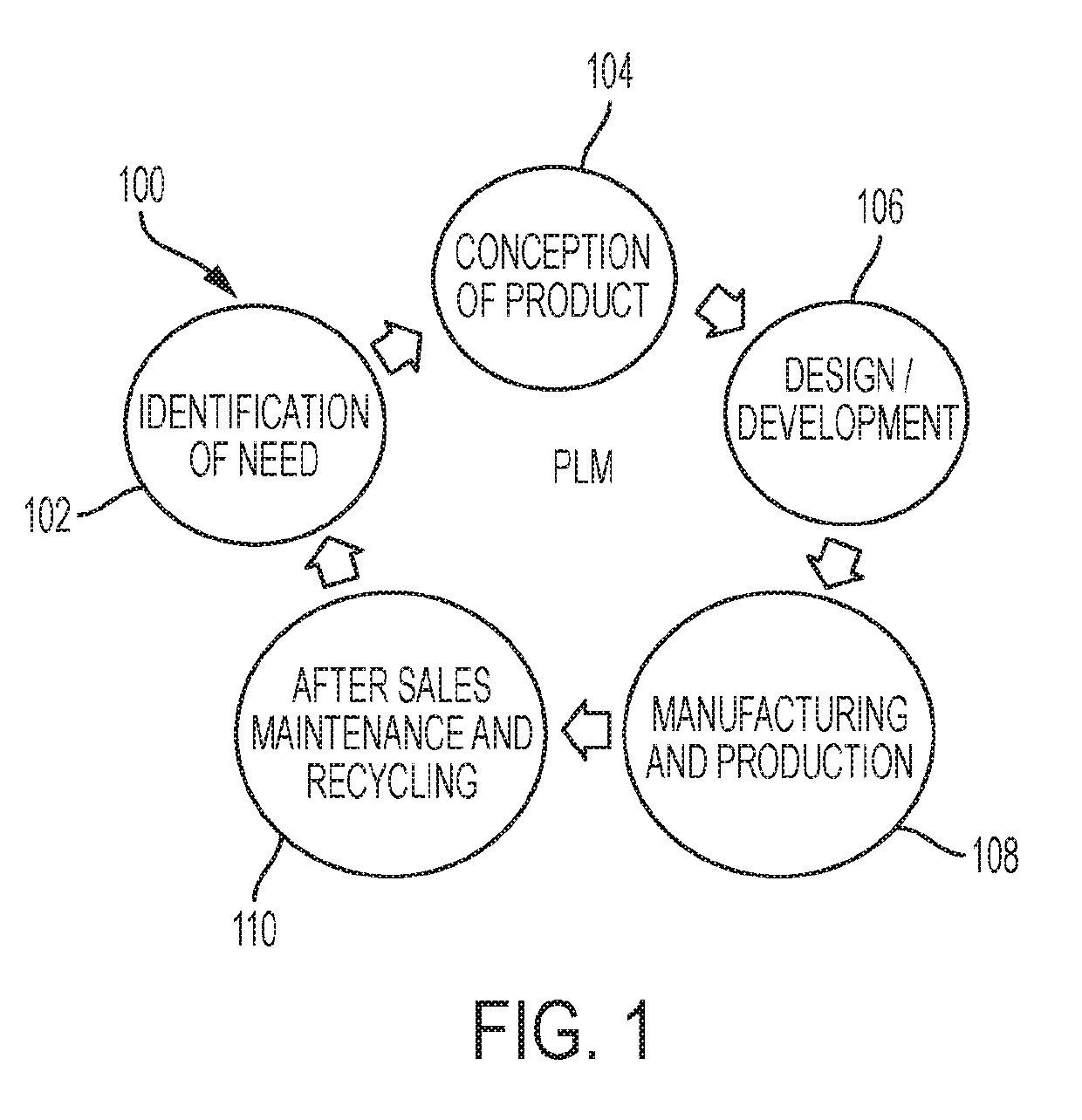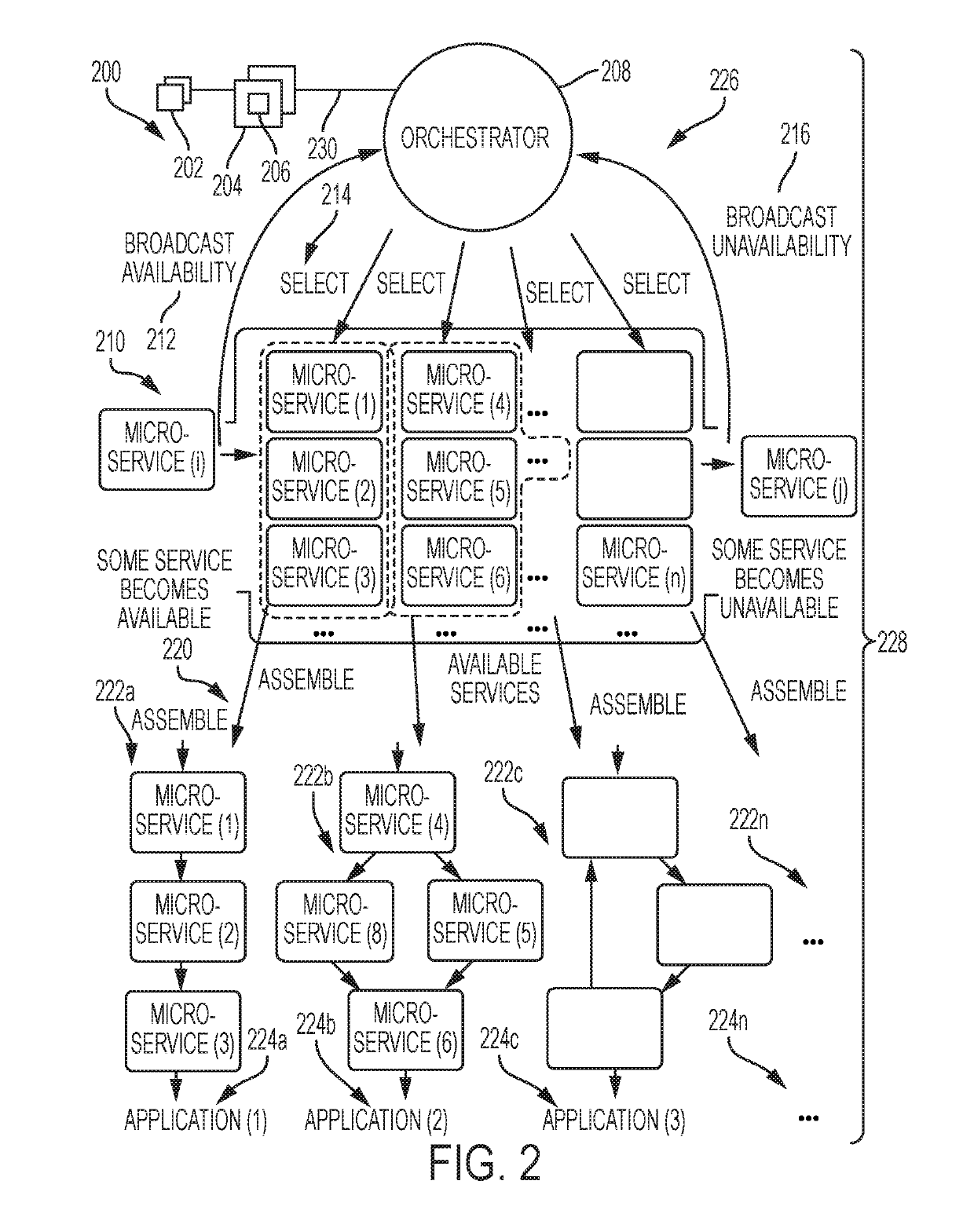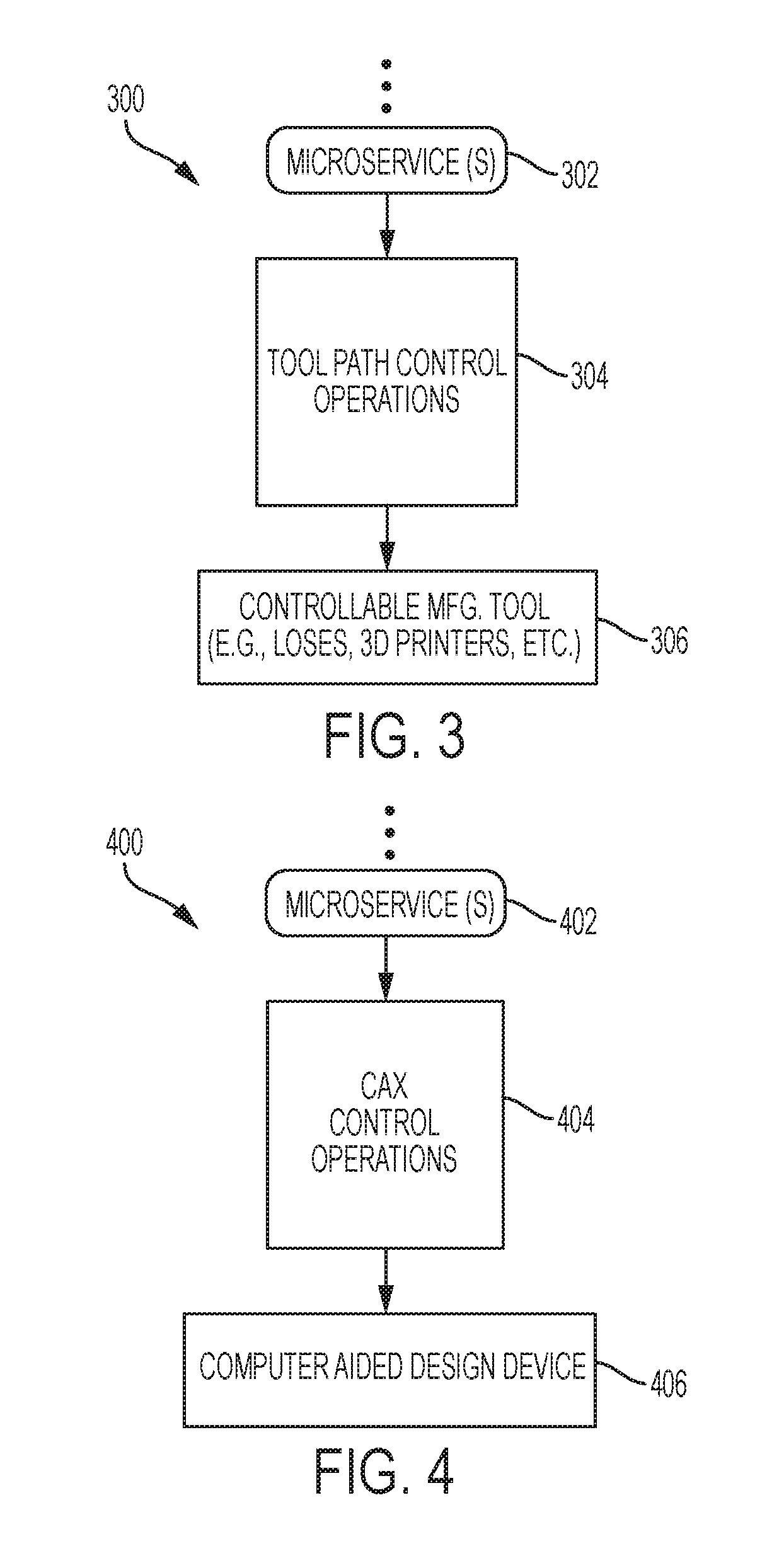Composing Microservices through Workflows for Applications in Engineering Design and Manufacturing
- Summary
- Abstract
- Description
- Claims
- Application Information
AI Technical Summary
Benefits of technology
Problems solved by technology
Method used
Image
Examples
Embodiment Construction
[0021]Presently it is common to have product lifecycle management (PLM) systems for use in one or more of the various areas of PLM (e.g., see FIG. 1) built in a monolithic fashion (i.e. where several software libraries solving distinct applications such as CAD or CAM are bundled into a single package) yielding a single large monolithic executable program that performs numerous distinct design-related tasks spanning from, but not limited to, shape and material synthesis, physical simulation, and manufacturing planning, to detailed optimization, tool-path generation, geometric dimensioning and tolerancing, and machine control for product manufacture. While these monolithic systems are comprised of several functional units, these units are tightly coupled, providing the advantages of an integrated software environment for lifecycle management where relationships between functional units are usually optimized for in-memory performance. However, changing or adding new functionality becom...
PUM
 Login to View More
Login to View More Abstract
Description
Claims
Application Information
 Login to View More
Login to View More - R&D
- Intellectual Property
- Life Sciences
- Materials
- Tech Scout
- Unparalleled Data Quality
- Higher Quality Content
- 60% Fewer Hallucinations
Browse by: Latest US Patents, China's latest patents, Technical Efficacy Thesaurus, Application Domain, Technology Topic, Popular Technical Reports.
© 2025 PatSnap. All rights reserved.Legal|Privacy policy|Modern Slavery Act Transparency Statement|Sitemap|About US| Contact US: help@patsnap.com



